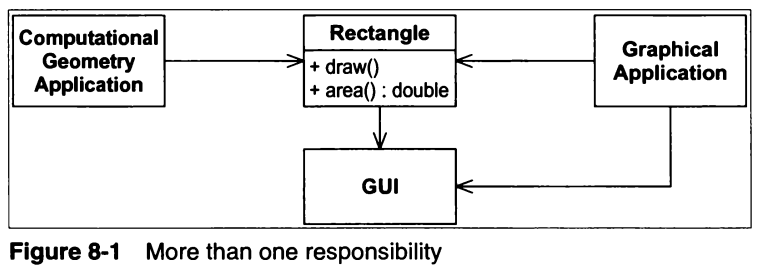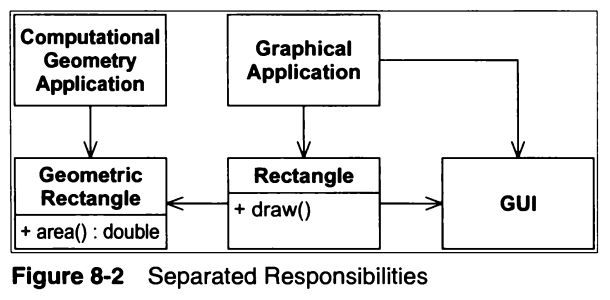Single responsibility principle
On this page
Single responsibility principle imples “A class should have only one reason to change”. If a class has more than one responsibility, then the responsibilities become coupled. Breaking them into multiple classes could make you to think about more flexible code structure.
I personally think ‘one responsibility’ is quite ambiguous. Too many things being handled in a single class is a generally bad idea if you consider flexibility, But spreading micro-sized classes all over the place could be a bad idea too. Martin also noted that the SRP should be applied only if two responsibilities changed at different times. Otherwise it will increase needless complexity.
Example
This example was taken from ‘Agile Software Development’ by Robert C. Martin.

The Rectangle class violates the SRP. It has two responsibilities.
- Providing a mathematical model of the geometry.
- Rendering the geometry to a GUI.
Since the Computational Geometry Application has nothing to do with GUI, the unncessary dependency was created. If we only changed the rendering logic of the Rectangle class, the change might impact the Computational Geometry Application in some ways.
According to the SRP, we can separate responsibilities like this.
